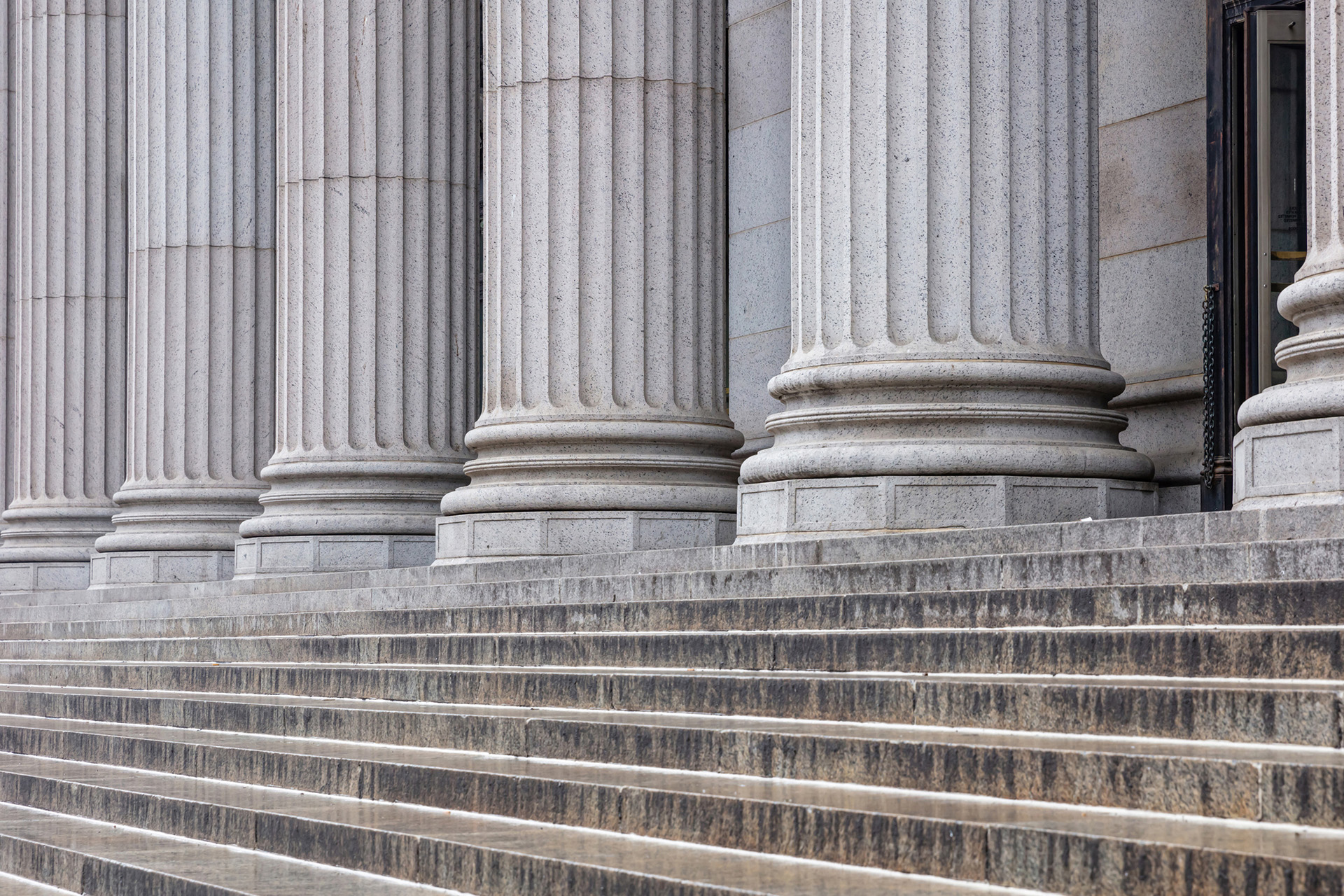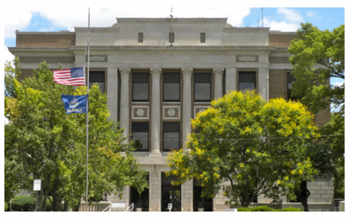Public statues—in their ubiquity when coupled with the human tendency to habituate the familiar—are as consciously unnoticed as individual trees. But that doesn’t mean that they don’t mean anything. This summer, sculptures of Confederate officers, slaveholding founders, long-dead public figures who expressed racist views, Old World explorers, and—in proof that all movements have absurdities at the margins—Melania Trump have been pulled down or defaced (or, in the case of Trump’s Slovenian wood-carving, burned).
Does a sculpture of Robert E. Lee represent “history” or idealize and sanitize “oppression”? Does a sculpture of Christopher Columbus represent a point of pride for Italian Americans or an affront to Native Americans? Both? Or even more?
I can’t hope to resolve the dispute, but it does offer us a springboard into a topic that has attracted my interest of late—namely, the way that courthouses and courtrooms mean. For instance, the manuscript of my new book project, “Everyday Lawyering: Where Imagination and Morality Meet Advocacy and Logic,” is currently under review at a university press. A large section of the book considers law-as-performance, which, in part, examines the spaces in which legal performances take place: trials in courtrooms. By this, I “mean” nothing more than that legal spaces transmit messages to us without using words.
We are all acculturated to associate certain architectural forms with certain institutions. And we understand that these forms convey meaning. A place of worship is perhaps the most common example—a steeple tells us we’re in front of a church. But the entire structure often suggests more than merely what it is. It may even tell a story.
The great French art historian Émile Mâle wrote of the Gothic cathedral that, “All that was necessary that men should know—the history of the world from the creation, the dogmas of religion, the examples of the saints, the hierarchy of the virtues, the range of the sciences, arts and crafts—all these were taught them by the windows of the church or by the statues in the porch.”
Norton County Courthouse in Norton, Kansas.
In the United States, courthouses have assumed a place of particular prominence. William Faulkner captures this sense in one of his short stories, “The Courthouse,” by asserting “the focus, the hub; sitting looming in the center of the county’s circumference like a single cloud in its ring of horizon, laying its vast shadow to the uttermost rim of horizon; musing, brooding, symbolic, and ponderable, tall as a cloud, solid as rock, dominating all: protector of the weak; judiciate and curb of the passions and lusts, repository and guardian of the aspirations and the hopes; rising course by brick course during that first summer.”
But traditional courthouse design is somewhat at odds with current notions of transparency, justice-as-fairness and inclusion. As the Government Services Administration (which, among other things, serves as the de facto landlord of federal agencies) has noted with respect to federal buildings generally, “by the late 1960s and early 1970s, some federal buildings responded to public expectations for a ‘cost-conscious, nonauthoritarian, sensitive, and inclusive government.’ Anti-monumental, yet still formal, buildings that conveyed the government as welcoming, accessible, and participatory were generally lower in scale, often with clear glass that allowed views of the interiors.”
With respect to courthouses, as architect Frank Greene puts it, the central challenge has been to ameliorate through innovative architecture public distrust of the legal system and thereby to reengage citizens in the democratic aspects of the process, stating “the traditional elements of American courthouses—their massive masonry construction, opacity, blocklike massing, and heroically scaled public porticos, staircases, and sculptural elements rendered in the authoritative language of neoclassical architecture—expressed the power of law but did little to communicate concern for the place of citizens in the workings of the process.”
The trick, then, for modern architects, is to create a structure that, as one wag put it, “look[s] like a courthouse, not a bus station.” Greene points to the Bronx County Hall of Justice (notice the name) as a paradigm of the new thinking. According to its architects, “the intent is to express the building as open and inviting, a metaphor for the transparency of the judicial process.”
To execute on this intent, the Bronx County structure, which opened in 2007, was conceived as a truly “public” building, but the realities of, for example, the Oklahoma City bombing thwarted that effort. Nonetheless, transparency in the form of a glass façade—hardened to anti-ballistic strength—was retained. And, as Greene says, despite the anti-terrorism concessions, “the essential message of the new Bronx criminal courthouse—a justice system open to public scrutiny, inclusive of public participation, and dependent on the support and protection of its community—remains unchanged.”
An omnipresent feature of courthouses has been the display of “justice” statuary, almost always including what is commonly referred to as “Lady Justice.” Here, we find the law’s exercise of violence, as represented by the sword, legitimated through its proximity to images of equal treatment of litigants and the weighing of their claims and defenses (the scales), as well as by impartiality (the blindfold). The female form rendered in a classical style, which is not historically associated with political chicanery and judicial corruption, further advances these ideals-as-universal-abstractions.
But of course the universal availability of these abstractions remains contested, as my fellow Kansan Langston Hughes’ short poem “Justice” drives straight to the mark:
That Justice is a blind goddess
Is a thing to which we black are wise:
Her bandage hides two festering sores
That once perhaps were eyes.
Perhaps as troubling as the message of the poem itself is that it was first published in 1932. But perhaps as a consequence of the current social disruptions, the French epigram, plus ça change, plus c’est la même chose (the more things change, the more they stay the same), will not bear out.
Randy D. Gordon is a partner at Barnes & Thornburg and co-chairs the antitrust practice group. He is executive professor of law and history at Texas A&M University.
This article should not be construed as legal advice or legal opinion on any specific facts or circumstances. The contents are intended for general informational purposes only, and you are urged to consult your own lawyer on any specific legal questions you may have concerning your situation.
Reprinted with permission from the July 13 edition of the Texas Lawyer © 2020 ALM Media Properties, LLC. All rights reserved. Further duplication without permission is prohibited, contact 877-257-3382 or reprints@alm.com.











/Passle/6488d4630e7e25c9ac9f834a/SearchServiceImages/2024-11-14-13-11-27-495-6735f6fff42d6cc59c8ec5c1.jpg)
/Passle/6488d4630e7e25c9ac9f834a/SearchServiceImages/2024-11-11-22-02-38-042-67327efe31216b909e6ea644.jpg)
